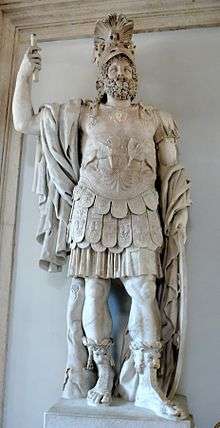Marco
Marco may refer to:
People
Places
New Zealand
Portugal
United States
Science and technology
Other

MATE (software)
MATE (/ˈmɑːteɪ/; Spanish pronunciation: [ˈmate]) is a desktop environment forked from the now-unmaintained code base of GNOME 2. It is named after the South American plant yerba mate and tea made from the herb, mate. The use of a new name, instead of GNOME, avoids conflicts with GNOME 3 components.
History
GNOME 3 (released in April 2011) replaced the classic desktop metaphor, substituting its native user interface: GNOME Shell. This action led to some criticism from parts of the free software community. Some users refused to accept the new interface design of GNOME and called for continued development of GNOME 2. An Argentine user of Arch Linux started the MATE project in order to meet this demand and announced the availability of Mate on 18 June 2011.
Software components
MATE has forked a number of applications originating as the GNOME Core Applications, and developers have written several other applications from scratch. The forked applications have new names - mostly in Spanish:

Marco (given name)
Marco (Italian pronunciation: [ˈmarko]) is an Italian masculine given name of Latin origin, derived from Marcus. The name is common in Italy, Austria, Portugal, the Netherlands and Switzerland.
Music
Sport

Moonraker (novel)
Moonraker is the third novel by the British author Ian Fleming to feature his fictional British Secret Service agent James Bond. It was published by Jonathan Cape on 5 April 1955 and featured a cover design conceived by Fleming. The plot is derived from a Fleming screenplay that was too short for a full novel so he added the bridge passage between Bond and the industrialist. In the latter half of the novel, the premise of Bond seconded to Drax's staff as the businessman builds the Moonraker, a prototype missile designed to defend England. Unknown to Bond, Drax is German, an ex-Nazi now working for the Russians; his plan is to build the rocket, arm it with a nuclear warhead, and fire it at London. Uniquely for a Bond novel, Moonraker is set entirely in Britain, which raised comments from some readers, complaining about the lack of exotic locations.
Moonraker, like Fleming's previous novels, was well received by critics. Moonraker plays on a number of 1950s fears, including attack by rockets (following the V2 strikes of the Second World War), Soviet communism, the re-emergence of Nazism and the "threat from within" posed by both ideologies. Fleming examines Englishness, and the novel shows the virtues and strength of England. Adaptations include a broadcast on South African radio in 1956 starring Bob Holness and a 1958 Daily Express comic strip. The novel's name was used in 1979 for the eleventh official film in the Eon Productions Bond series and the fourth to star Roger Moore as Bond; the plot was significantly changed from the novel to include excursions into space.

Mike Patton
HIDDEN ERROR: Usage of "also_known_as" is not recognized
Michael Allan "Mike" Patton (born January 27, 1968) is an American singer-songwriter, multi-instrumentalist, film composer, producer, and actor, best known as the lead singer of the alternative metal band Faith No More. Patton was also the founder and lead singer of experimental band Mr. Bungle, and has played with Tomahawk, Fantômas, Lovage, The Dillinger Escape Plan, and Peeping Tom.
Known for his eclectic influences and experimental projects, Patton has earned critical praise for his diverse array of vocal techniques. VVN Music found Patton to possess the highest vocal range of any known singer in popular music, with a range of six octaves. He has many producer or co-producer credits with artists such as John Zorn, Sepultura, Melvins, Melt-Banana, and Kool Keith. He co-founded Ipecac Recordings with Greg Werckman in 1999, and has run the label since.
He is regarded as very hard-working. Faith No More keyboardist Roddy Bottum remarked about Patton "caffeine is the only drug he does", in reference to the Faith No More song "Caffeine" from the album Angel Dust, which Patton wrote while in the middle of a sleep-deprivation experiment.

Moonraker (sail)
A moonraker, also known as a moonsail,hope-in-heaven, or hopesail, is a square sail flown immediately above a skysail (see sail-plan) on the royal masts of a square rigged sailing ship. None of the four- and five-masted square rigged ships carried a moonsail.
The equivalent sail, if triangular, is called a skyscraper.
Moonrakers are relatively unusual sails only used on ships built primarily for speed.
References
Podcasts:

